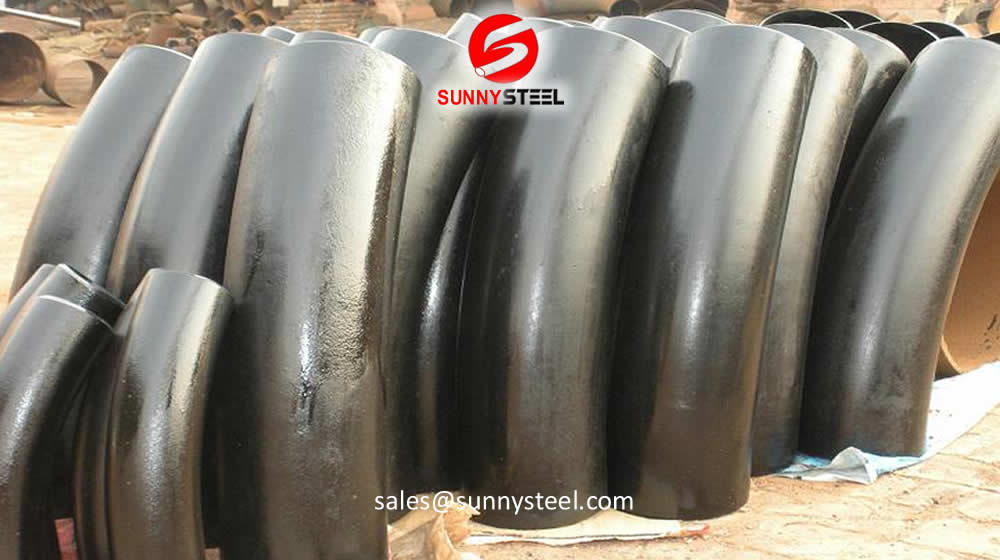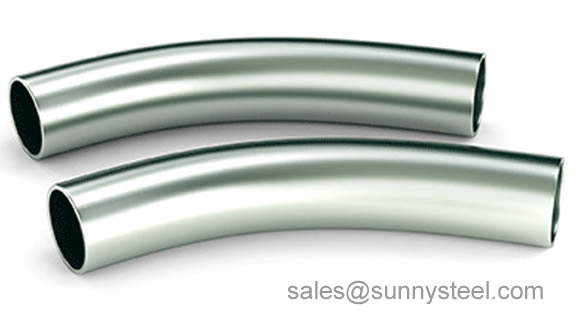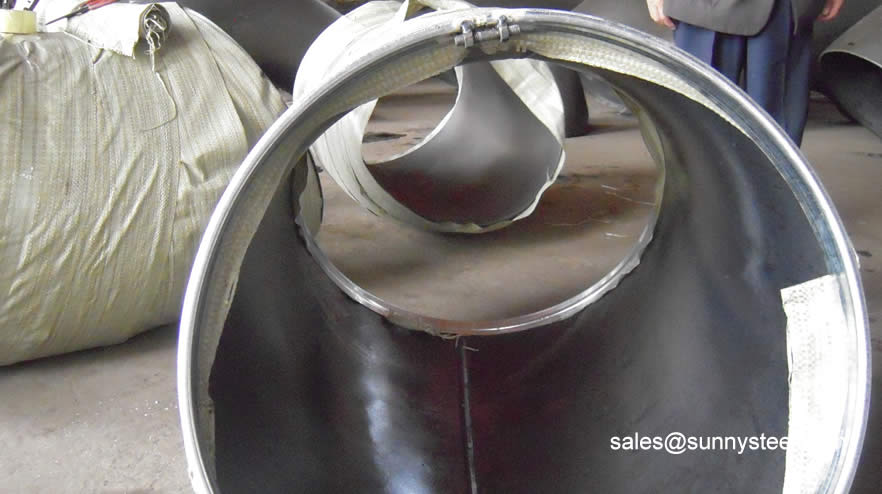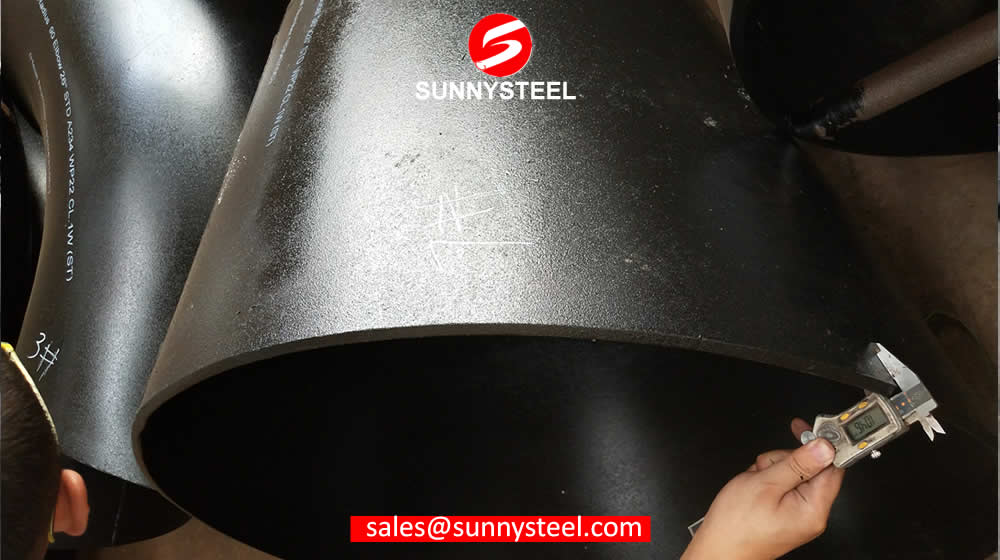3D Pipe bending
A 3D pipe bending is a pipe bend that the bend radius is 3 times the pipe outside diameter.
In any project using metal pipes, there are likely to be a few places where the pipe has to go around a corner, or has to be bent to follow a certain contour. In many cases, with proper planning and a good design, these bends can be made using pre-fabricated elbows, which come in popular angles like 45 or 90 degrees and several common bend radii, typically referred to as either short or long-radius bends.
Sometimes, however, a custom bend will be required to make the pipe fit precisely around an obstacle or to follow a curve perfectly. Pipe can be custom-bent with presses or more complex machines using one of several common methods, including ram bending, rotary draw bending, compression bending and three roll bending, among others. Separate dies are typically required for each size of pipe and each different bend radius, except on more complex machines.
So what are 3D bends and what are they for?
A 3D bend is a bend in which the radius of the curve is equal to 3 times the diameter of the pipe. It is a smoother bend than a 1.5D bend, which looks almost like a regular 90-degree right angle, but it is a sharper bend than a 5D bend, which looks like a smooth arc between two perpendicular pieces.
Here are a few of the places where you will commonly find 3D bends being used:
1. Automotive Exhaust Systems
Both manufacturer-supplied and custom exhaust systems for cars and trucks often feature a wide assortment of bends to maneuver around various obstacles on the underside of the car, such as the engine, transmission, cross-members and the fame. Most vehicle exhausts feature custom compound beds, and the fabricators generally prefer smoother curves, like 3D bends or even 5D bends, because they reduce the turbulence and back-pressure inside the exhaust system, and that can help increase an engine’s performance.
2. Automotive Roll Cages
Off-roading can be a very competitive sport, or, more simply, an expensive hobby. One of the many dangers when rock-crawling, mudding or generally pushing a vehicle beyond its limits, is the possibility of rolling the vehicle over. To prevent injury and damage to the vehicle, a quality roll cage is an absolute necessity. Many roll cages are custom formed from metal pipe, often chromoly steel, using an assortment of bends, including the common 3D bend. Each piece is bent, cut and welded together to make a complete roll cage that is both durable and aesthetically pleasing.
3. Structural Frames
3D bends are very common in structural frames of all kinds. These can range from the frames of custom automobiles, to the frames of buildings, or even airplanes or spacecraft. Often, to build a structural frame, pipe is bent, cut and welded together to make a strong skeleton, and then sheet metal is attached via screws or welds to create a completed assembly, which is both extremely strong and resistant to the elements. When built using aluminum, titanium or certain alloys, it can also be lightweight and corrosion-resistant.
4. Furniture
Many types of furniture incorporate tubular steel and 3D bends for either structural or aesthetic purposes. Tables frequently use tubular steel legs, with bends where they meet the tabletop to provide support. Metal chairs, couches and futons with tubular frames often use similar bends to provide a nice gentle curve that is both pleasing to the eye and structurally rigid. Shelving units can also incorporate custom bends, either for decoration or for structural integrity.
5. Fencing
The 3D bend is also quite common in fencing, for both decorative and structural uses. It is seen extensively in galvanized chain-link fencing, especially to add a gentle curve to gates and other decorative items, or in custom-designed fencing. Pipe is also used regularly in fencing for cattle, horses and other livestock, as well as for domestic pets, and often decorative touches are added that require custom bends.
6. Plumbing
In the plumbing industry, 3D bends are quite common. They are incorporated anywhere that standard elbows cannot be relied upon to bypass obstacles or to change the angle of the pipe. In pipes that contain high-viscosity liquids or fluids that require reduced turbulence, the smoother 3D bend is often preferable to sharper bends. Custom bends are used in plumbing of all kinds, from the pipes in your home, to the pipes in chemical plants, food processors or refineries.
7. Wiring Conduit
Wiring conduit is designed to protect electrical cables from the weather, accidental damage and other dangers. When wiring conduit is required on an electrical job, often it must be bent to go around corners or other obstacles. Typically, smoother curves like 3D or 5D bends are used instead of sharp curves, because it makes it much easier to fish the wire through the conduit after it is installed. Electricians usually carry their own tools to bend small-diameter conduit, though for larger-diameter versions, they may require custom bending services.
8. Pipelines
Gas and oil pipelines, like any plumbing system, often use 3D bends in many places along their lengths. Unlike typical household pipes, however, these are typically much larger, and require some serious machinery to do custom bends. Gentle bends help the high-viscosity oil flow through the pipes easier, and they help natural gas flow smoother, reducing pipe fatigue and the chance of leaks.
9. Hand Rails
An often-overlooked area where 3D bends are used is in the hand rails for stairways or walkways, as well as the safety rails used to provide handicap access. Custom bends are often used to follow curves, go around corners or to provide mounting points at each end of the pipe. Sometimes the bends are also used strictly for decorative purposes.
10. Art Projects
In many art projects, tubular steel is used to create a frame, upon which the artist builds the rest of the piece. Custom bends are often used to create gentle-flowing lines and other aesthetic features, which many times are covered up by other materials. The frame creates a strong base for the rest of the piece, and determines its overall shape.
If you have a project that calls for 3D bends, it often may not be feasible to buy the equipment to produce them yourself. The tools can be prohibitively expensive, and they require a significant amount of training and practice to operate them properly. Fortunately, there are services available that will custom-bend pipe to your exact specifications, saving you the expense and the hassle of buying your own equipment.
Pipe bending reference
Just before the final delivery, our merchandise are stringently checked by a team of quality analyzers on varied parameters, which guarantee their flawlessness and durability. In addition, clients can avail these goods from us at competitive rates.
Standards
ASTM
- ASME/ANSI B16.49 Factory-Made Wrought Steel Buttwelding Induction Bends for Transportation and Distribution Systems
- ASTM A403 Standard Specification for Wrought Austenitic Stainless Steel Piping Fittings
- ISO 2851 tainless steel bends and tees for the food
JIS
- JIS B2311 Universal steel butt-welding pipe fittings
- JIS B2312 Steel butt-welding pipe fittings
- JIS B2313 Steel plate butt-welding pipe fittings
- JIS B 2321:1995Aluminium and aluminium alloy butt-welding pipe fittings
EURO
- DIN 3867 Non-soldering compression couplings - Pressure bush for butt joints
- DIN 2609 Steel butt-welding pipe fittings; technical delivery conditions
- BS 1640 Specification for steel butt-welding pipe fittings for the petroleum industry
- BS 1965 Butt welding pipe fittings for pressure purpose
- STPG38
Inspection, packing & delivery
Materials
They are manufactured utilizing higher grade raw material, advanced machines and technologies.
- Abrasion resistant: Cearmic lined, Ceramic tile, Bi-metal clad pipe bending, Rare earth alloy wear-resistant pipe bending
- Carbon steel:
- SA234 WPB, SA234 WPC,SA42 WPL6, SA42 WPL3
- WP1. MSS-SP75, WPHY,WPHY 46,WPHY 52
- WPHY 56,WPHY 60,WPHY 65, WPHY 70
- DIN 1629 St37, RST37.2 St52, STPG38
- Stainless:
- ASTM/ASME SA403 304,304L ,316, 316L, WP304L, 3 WP316 WP347 (H) ,WP317 (L),WP321.
- DIN 1.4301, 1.4306, 1.4401, 1.4571
- JIS SUS304,SUS304, SUS304L, SUS316, SUS316
- Alloy:
- ASTM/ASME SA234 WP12, WP11,WP22, WP5, WP9, WP91, ASTM B361 GR.3003-6061, ASTM B366 UNS
- N04400,N08800, N08825 N1001-N10276-N10665, WPT2-WPT12
- ASTM 182 F1, F5, F6, F7, F9, F11, F12, F22, F51, 16MnR Cr5Mo
- 12Cr1MoV 10CrMo910 15CrMo 12Cr2Mo1, St45.8

Pipe bend FAQs
Pipe fittings are necessary to join together pipes, or to change the direction of an existing pipe. Pipes and pipe fittings are made of a variety of materials, depending on the fluid or gas being transported. Most pipe fittings tend to be either threaded or able to slip over the pipes they connect. Whether you are using steel pipes of PVC pipes, a chemical solvent is required to create a seal between the pipe and the fittings.
Measure the required length of the pipe to be installed, keeping in mind the extra length required where the pipe will be inserted into the fitting. Mark this length on the pipe.
How to Calculate a Pipe Bend?
Pipe fittings are necessary to join together pipes, or to change the direction of an existing pipe. Pipes and pipe fittings are made of a variety of materials, depending on the fluid or gas being transported. Most pipe fittings tend to be either threaded or able to slip over the pipes they connect. Whether you are using steel pipes of PVC pipes, a chemical solvent is required to create a seal between the pipe and the fittings.
Measure the required length of the pipe to be installed, keeping in mind the extra length required where the pipe will be inserted into the fitting. Mark this length on the pipe.
Bevelled Ends
The ends of all buttweld fittings are bevelled, exceeding wall thickness 4 mm for austenitic stainless steel, or 5 mm for ferritic stainless steel. The shape of the bevel depending upon the actual wall thickness. This bevelled ends are needed to be able to make a "Butt weld".
Welding Bevel acc.to ASME / ANSI B16.9 and ASME / ANSI B16.28
ASME B16.25 covers the preparation of buttwelding ends of piping components to be joined into a piping system by welding. It includes requirements for welding bevels, for external and internal shaping of heavy-wall components, and for preparation of internal ends (including dimensions and dimensional tolerances).
Our in-hourse R&D team developed bevel ends equipment are good using in thickness 2mm to 20mm pipe fittings, guarantee high efficiency and high quality.
Send us your technical drawings
These weld edge preparation requirements are also incorporated into the ASME standards (e.g., B16.9, B16.5, B16.34).
ASME B16.25 (BUTT WELD ENDS)
Buttweld Fittings general
A pipe fitting is defined as a part used in a piping system, for changing direction, branching or for change of pipe diameter, and which is mechanically joined to the system.
There are many different types of fittings and they are the same in all sizes and schedules as the pipe.













